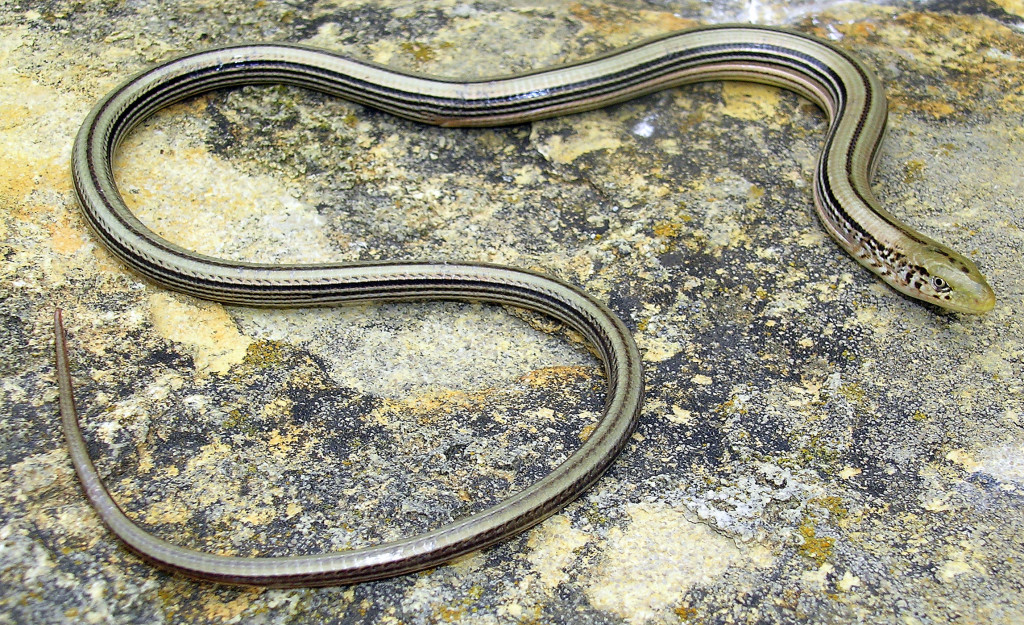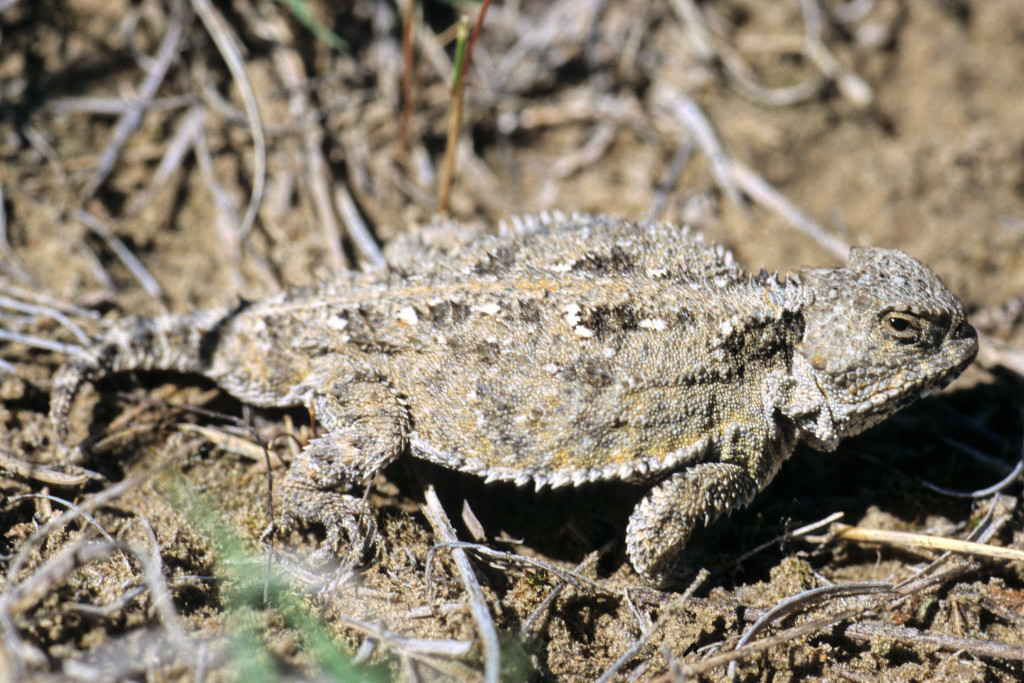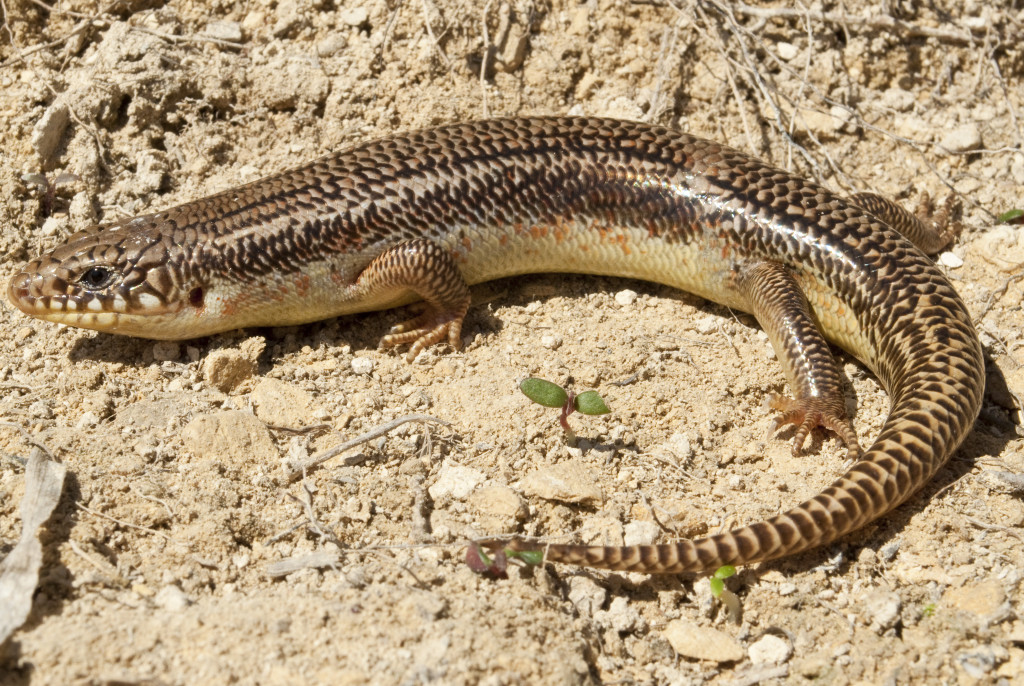
By Monica Macoubrie, Wildlife Education Specialist
Take a quick hike through the prairies of western Nebraska or the rocky terrain bordering Kansas, and you may see a scampering reptile with a long slender tail. Don’t panic — it’s not a snake. It’s just the most underrated reptile of all: lizards.
With 12,000 species worldwide, one could say that lizards have been rather successful. They are by far the most diverse group of modern reptiles in body shape and size. Ranging as small as 0.8 inches long in some geckos to more than 10 feet long in monitor lizards, these scaly-skinned animals can be found on almost every continent, and they inhabit a wide array of habitats.
What Is a lizard?
Lizards are reptiles in the order Squamata, the same group as snakes. However, lizards have special adaptations and traits that distinguish them from their snake cousins. For instance, most lizards have legs, with the exception of legless lizards, which lost their limbs through evolution; over millions of years, these animals developed smaller and smaller limbs until eventually, their legs and arms disappeared. There are hundreds of legless lizards and most of them tend to live underground. Without legs and arms, these animals “swim” through the dirt, similarly to snakes.
So, is it a legless lizard or a snake? A trait that can usually help you identify a snake from a lizard is their moveable eyelids. Outside of snakes, most reptiles have eyelids that can blink and maintain moisture while also protecting eyes. Some lizards, such as geckos, lack eyelids. Instead, they have a transparent scale called a spectacle which protects the eye.
Also, lizards have evolved to have external ear openings. When looking at a lizard, you may notice two small holes on the sides of its head, and this is how it hears. Unlike mammals, which have external pinnae, lizards simply have openings as their ears. However, just like the other typical traits of lizards, there are exceptions. Not all lizards have ear openings.
Lizards of Nebraska
Four families of lizards can be found in Nebraska, with a total of 10 different species. Except for the skinks, most of Nebraska’s lizards are well-adapted to dry environments, therefore their diversity is greater in the western and northwestern portion of the state than in the southeast. This is in contrast with most of the other herpetofauna diversity in the state, meaning that other groups of Nebraska reptiles (and amphibians) tend to concentrate in the southeast or the east.
Western Slender Glass Lizard (Ophisaurus attenuatus)
Western slender glass lizards are the most snake-like lizard in Nebraska, because they lack arms and legs. They are the only legless lizard species in Nebraska. Normally, these lizards are a greenish or light brown and often appear gold or bronze down the length of the body. The head is also speckled with brown flecks.
This lizard can reach lengths of 20-40 inches, but two-thirds of the body is the tail. The animal gets its name “glass lizard” due to its tail being extremely fragile. Many lizards have the ability to let go of their tail in order to escape a predator, and the glass lizard can do exactly that. When it loses its tail, it can break into several pieces resembling shattered glass. The tail can regenerate, but when it comes back, it won’t be the same length or pattern, and thus, may not match the rest of the lizard’s body.
The western slender glass lizard is considered the rarest lizard in Nebraska, as it has only been found in a few counties. This species prefers grasslands with tall grasses and loose soils. This animal is diurnal and actively forages for insects, spiders and other invertebrate prey.

Greater Short-horned Lizard (Phrynosoma hernandesi)
Of all the lizard species in Nebraska, the greater short-horned lizard is the easiest to identify. Commonly and incorrectly referred to as a “horned-toad,” this lizard is characterized by the presence of spikes on its head and body, which are just modified scales. Normally appearing gray or brown, some Nebraska populations could appear more yellow or orange. The shortgrass prairie has the highest concentrations of this lizard species, which prefers sandy soils and rocky terrain.
Greater short-horned lizards are more heat tolerant compared to other species of lizards in the state. During the most extreme heat, these lizards will either bury themselves in the sand or take cover beneath vegetation. These animals are mainly insectivores and devour large amounts of grasshoppers and ants as their prey. This is also the only species of lizard in Nebraska to give live birth.

Many-lined Skink (Plestiodon multivirgatus)
This skink can be found in open grasslands of short- and mixed-grass prairies with sandy soils throughout its range. This ground-dwelling animal has a white strip down its back with alternating light to dark lines, and appearing brown to olive green overrall. The scales of skinks are smooth and glossy compared to that of other lizards, such as prairie lizards.
The many-lined skink’s tail is exceptionally long for the body when compared with other skinks. The tail can be broken and regenerated, but like other lizards, it will never be as long or the same color when it grows back. Many-lined skinks will breed in spring, and females lay and brood their eggs in sandy soil through early summer from June to July. Hatchlings emerge in July and August and are colored black with vague hints of stripes and a bright blue tail.

Great Plains Skink (Plestiodon obsoletus)
This is the largest skink in Nebraska, reaching lengths up to 13 inches. Normally, this skink is light brown to light gray with a black or dark brown fleck on each body scale. This skink differs from others in Nebraska by its scale rows. Other skinks have lateral scales that are arranged in parallel rows while the Great Plains skink’s scales are arranged in diagonal rows.
This skink is mainly found in grassland habitats with rocky outcrops. They are exceptionally good at burrowing and prefer loose soils to get beneath large rocks to hide from extreme heat or cold. These skinks are extremely abundant in the Flint Hills of eastern Kansas and Oklahoma.
The Great Plains skink is one of the first skinks to emerge from hibernation, usually around mid- to late March. Feeding and breeding will then begin later in the spring. The adults of these species are voracious predators and eat insects, spiders, smaller lizards, snakes and even eggs of other lizards, including Great Plains skink eggs. This lizard is considered aggressive when captured and bites hard when handled.

Nebraska is home to 10 species of lizards; to learn more about the other species of Nebraska lizards, click here.
